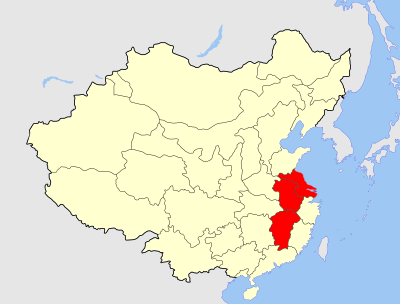
| Viceroy of Liangjiang | |||||||
|---|---|---|---|---|---|---|---|
| Chinese name | |||||||
| Traditional Chinese | 兩江總督 | ||||||
| Simplified Chinese | 两江总督 | ||||||
| |||||||
| Governor-General of the Two River Provinces and Other Local Admirals, in Charge of Military Affairs, Food and Wages, Management of Rivers, and Administration on Nanhe Affairs (full title) | |||||||
| Traditional Chinese | 總督兩江等處地方提督軍務、糧饟、操江、統轄南河事務 | ||||||
| Simplified Chinese | 总督两江等处地方提督军务、粮饷、操江、统辖南河事务 | ||||||
| |||||||
| Manchu name | |||||||
| Manchu script | ᡤᡳᠶᠠᠩᠨᠠᠨ ᡤᡳᠶᠠᠩᠰᡳ ᡠᡥᡝᡵᡳ ᡴᠠᡩᠠᠯᠠᡵᠠ ᠠᠮᠪᠠᠨ | ||||||
| Romanization | giyangnan giyangsi uheri kadalara amban | ||||||
The Viceroy of Liangjiang, fully named in Chinese as the Governor-General of the Two River Provinces and Other Local Admirals, in Charge of Military Affairs, Food and Wages, Management of Rivers, and Administration on Nanhe Affairs, was one of eight regional Viceroys during the Qing dynasty. The Viceroy of Liangjiang had jurisdiction of military, civil, and political affairs over then Jiangnan Province (approx. nowadays Jiangsu, Anhui and Shanghai) and then Jiangxi Province (approx. nowadays Jiangxi). The position was set up in 1647 and abolished in 1912.